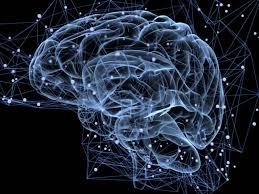A nurse is caring for a client who has a new diagnosis of schizophrenia and a prescription for an antipsychotic medication. The nurse should recognize that which of the following indicates an adverse effect that must be reported to the provider?
The client is observed displaying a shuffling gait while walking in the hall.
The client is observed mumbling quietly while alone in the day room.
The client states, "I feel light-headed when I stand up quickly."
The client states. "Being in the sun seems to really hurt my eyes
The Correct Answer is A
Choice A reason
The client is observed displaying a shuffling gait while walking in the hall is the correct answer. The nurse should recognize that observing a shuffling gait in a client who is taking antipsychotic medication is an adverse effect that must be reported to the healthcare provider. A shuffling gait is a movement disorder known as parkinsonism, which can be a side effect of some antipsychotic medications, particularly first-generation or typical antipsychotics.
Parkinsonism includes symptoms similar to Parkinson's disease, such as a shuffling walk, muscle stiffness, tremors, and difficulty with balance and coordination. It can occur as a result of blocking dopamine receptors in the brain, leading to an imbalance in dopamine levels.
Choice B reason:
The client mumbling quietly while alone is not correct because in the day room may be related to the symptoms of schizophrenia, and it does not indicate an adverse effect of the antipsychotic medication.
Choice C reason:
The client feeling light-headed when standing up quickly is not correct and it may be related to postural hypotension, which can be a side effect of some antipsychotic medications. While it should be monitored and reported if persistent or severe, it is not as urgent as reporting a shuffling gait.
Choice D reason:
The client stating that being in the sun hurts their eyes does not necessarily indicate an adverse effect of the antipsychotic medication. It may be related to other factors or unrelated to the medication.

Nursing Test Bank
Naxlex Comprehensive Predictor Exams
Related Questions
Correct Answer is D
No explanation
Correct Answer is B
Explanation

The systolic pressure is estimated by noting the pressure at which the pulse disappears and reappears. The diastolic pressure is not measured by this method, but it can be useful when the sounds are difficult to hear.
Choice A is wrong because applying the largest cuff available can result in a falsely low reading. The cuff size should be appropriate for the client’s arm circumference.
Choice C is wrong because placing the arm above the level of the client’s heart can also cause a falsely low reading. The arm should be at the level of the heart for an accurate measurement.
Choice D is wrong because deflating the cuff quickly can lead to missing or skipping sounds, resulting in an inaccurate reading. The cuff should be deflated slowly and evenly.
Normal ranges for blood pressure vary depending on age, sex, and health conditions, but generally, a systolic pressure below 120 mmHg and a diastolic pressure below 80 mmHg are considered normal for adults.
Whether you are a student looking to ace your exams or a practicing nurse seeking to enhance your expertise , our nursing education contents will empower you with the confidence and competence to make a difference in the lives of patients and become a respected leader in the healthcare field.
Visit Naxlex, invest in your future and unlock endless possibilities with our unparalleled nursing education contents today
Report Wrong Answer on the Current Question
Do you disagree with the answer? If yes, what is your expected answer? Explain.
Kindly be descriptive with the issue you are facing.
